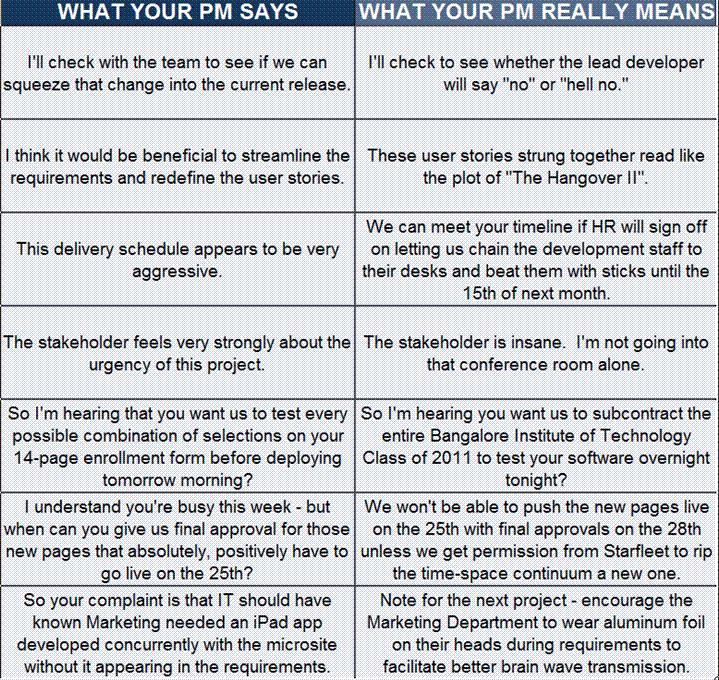The brilliant Peter Saddington, a/k/a AgileScout, posted a wickedly funny April 1st announcement of a Certified Agile Blogger course. Yep, April Fool! Read it, it’s great fun.
Since I blog about Agile from the point of view of the business stakeholders, it got me thinking about other certifications we could use in the Agile community.
CERTIFIED WATERFALL COUNSELOR
This 2-day course will give you all the skills you need to wean the business off Waterfall into the new Agile reality. You’ll learn to recognize the stages of change resistance:
Denial – “We’ve never done it like this, not going to start now. Unless you’re going to make each sprint eighteen months long.”
Anger – “I wouldn’t scrum with you if you were the last PM on earth!”
Bargaining – “Okay, okay – I’ll meet with you to answer your requirements questions, just give me one more product cycle that carries a three-ring binder full of comprehensive and immovable up-front requirements.”
Depression – “You don’t really want my sign-off. Nobody values my opinion anymore, all anybody cares about is that stupid wiki now.”
Acceptance – “Right, so explain to me again how that task moves from ‘In Progress’ to ‘Done’.”
CERTIFIED AGILE SHERPA
Marketing is from Vegas, Dev is from Alderan. (Silicon Valley. I meant Silicon Valley). There’s a language barrier. The two teams dress differently, have different customs. Marketing needs an Agile Sherpa, a guide and emissary, to help them navigate this unfamiliar world.
Upon completion of the Certified Agile Sherpa course, you will be bilingual, fluent in both Geek and Hype.
You will be able to explain to the Marketing team why “Welcome changing requirements, even late in development.” carries as much fine print as “Facebook values your privacy”. And why code complete isn’t as flexible as their expense account.
You will be able to explain to the Dev team that “The sole success criterion will be the number of clicks generated.” carries as much fine print as “Drink responsibly”. And why there would be another success metric besides velocity.
Are there other certifications that could be useful? Drop me a line in the comments. this could be the start of a beautiful collaboration. With a little fine print…

